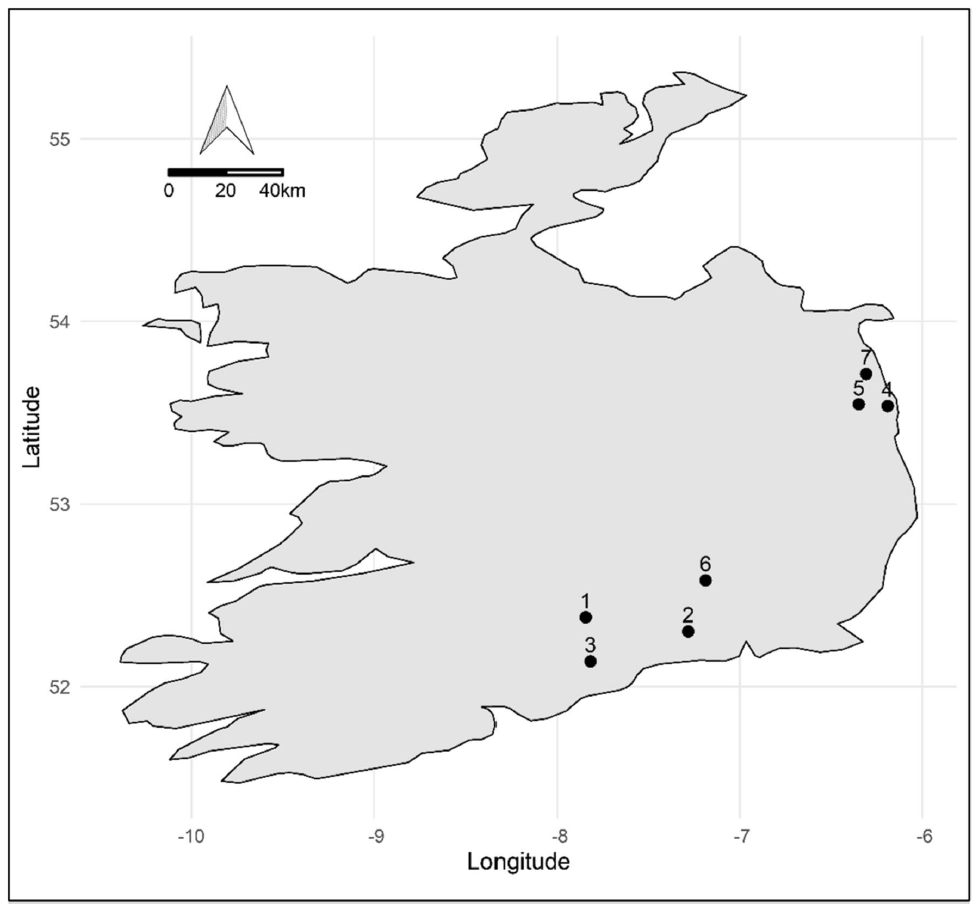pan-european assessment, monitoring, and mitigation of stressors on the health of bees
Pollinator diversity for resilience: new paper observes how current weather conditions influence bees
Weather conditions are an important driver of pollinator activity and with global climate continuing to change, researchers ponder the question of how the changing weather patterns affect the relative contributions and importance of different pollinator groups. To understand what might happen in the future, it is important to first understand how bees respond to current weather conditions. To find out more about this question, a recent study co-funded by PoshBee conducted in Ireland observed honeybee (Apis mellifera) and buff-tailed bumblebee (Bombus terrestris) activity across a variety of weather conditions at seven apple orchards to determine how four weather variables (temperature, relative humidity, solar radiation, wind) influenced the flight activity of each species.

Map of apple orchard sites across the Republic of Ireland. Researchers observed three honeybee and three bumblebee colonies at each site. Sites 4, 5, and 7 are in a region which historically experiences more inclement weather than the region in which 1, 2, 3 and 6 are situated.
Researchers found that honeybees were more sensitive to weather changes than bumblebees, indicating that bumblebees could compensate for low honeybee activity in inclement conditions. This finding supports the theory that pollinator diversity provides resilience, making it important to ensure a diversity of pollinators with different responses to weather, and a variety of floral resources. Such diversity would help efforts to diminish the effect of changing weather and ensure a sustained delivery of pollination services to crops and wild plants.
Read the full paper here.